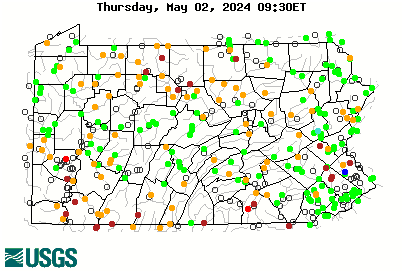Hey Tom,
Those are nice fish. Perhaps you also caught some bluegills, but just as an observation the Lebanon Co pond panfish in your two pics are green sunfish. The much larger mouth on a GSF can handle big flies. I would add that in at least some SW Pa warmwater streams that we surveyed in 1976 in Greene, Fayette, and Westmoreland Co’s, hybridized GSF (crossed with other SF species) were fairly common. At the time we thought that a contributor to their occurrence might have been the streams’ turbidities. GSF is a species that does well in degraded stream water quality conditions, which would include organic enrichment and sedimentation, as examples.
While not numerous in the vast majority of lakes that I surveyed in SE Pa GSF were often present in very low numbers and where present, hybrids were also commonly present. They were also present in very low numbers in most warmwater streams there.
Blue Marsh Lake, Berks Co, is where we found the most GSF as I recall and in that case they were numerous enough to provide a fishery. Small bluegills were abundant in that lake, but the hybridized GSF grew to a respectable size, possibly owing their comparatively good growth to what’s known as hybrid vigor. Contributing to the hybrid’s occurrence there could also have been that lake’s seasonal turbidity from runoff and phytoplankton blooms. It’s likely that the GSF originated from impounding a portion of a formerly warmwater stream segment of the Tully.
Thanks for the opportunity to write a bit about GSF here, as I don’t recall that species ever having being mentioned in this forum before. It’s probably more than you ever wanted to know.









